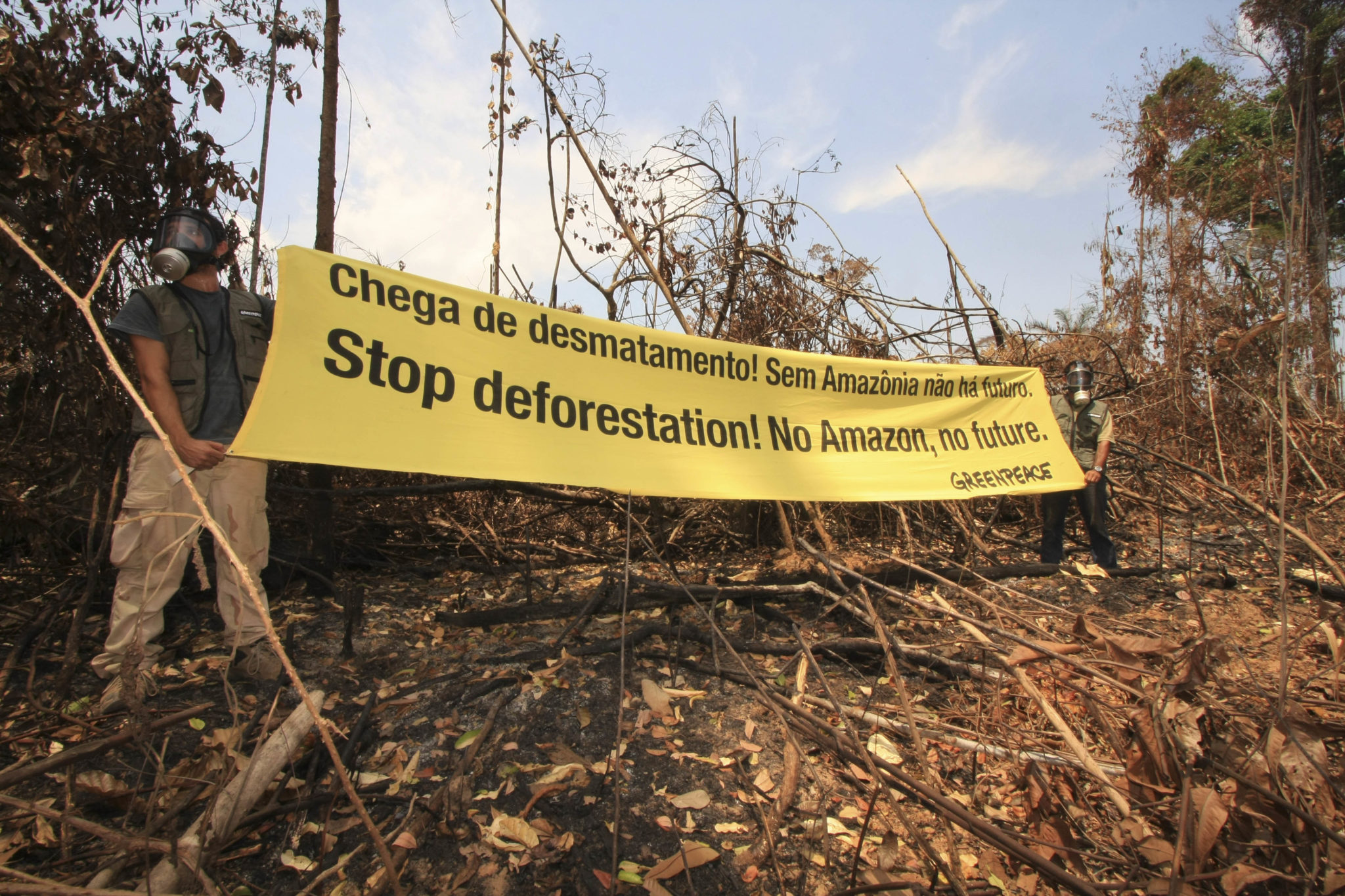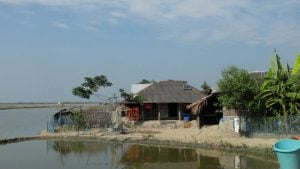Today’s tumultuous times for Brazil manifest in multiple ways. From political upheaval and economic gloom to a far-reaching corruption investigation that could topple its most powerful leaders, the country is experiencing profound and difficult changes. The country’s leadership has seized the moment to roll back fundamental environmental and human rights protections, while simultaneously seeking foreign investment to finance the expansion of industrial development in the Amazon rainforest. As a key foreign investor, China stands to significantly benefit from financing Brazil’s development agenda. However, its support of projects that result in rainforest destruction undermines China’s efforts to position itself as a leader in the global fight against climate change.
Brazil’s current economic and political shifts and its effort to attract Chinese investment are part of a concerted effort by the Brazilian government to industrialise vast sections of the Amazon, with grave ramifications for the forests, rivers, and peoples who help sustain this irreplaceable biome for the benefit of humanity. Such changes will serve to compound current trends of destruction in the Brazilian Amazon, like the 30% increase in deforestation recorded between 2015-16. Amazon rainforest destruction implies serious consequences for climate stability, and nowhere does this threat loom larger than in the Tapajós River basin, known for its preserved ecosystems, rich biodiversity, and diverse indigenous cultures.
From nearly its first day in office, the administration of President Michel Temer has pushed to dismantle fundamental socio-environmental safeguards in order to smooth the way for the construction of new commodities corridors through the Amazon’s forests and river systems. Global demand for commodities like soy and aluminium seem to justify this agenda, but the plans also conspicuously and directly correspond with the interests of Brazil’s powerful agribusiness lobby – known as the ruralistas – that helped bring Mr. Temer to power with the impeachment of former President Dilma Rousseff.
The Brazilian government lacks the means to alone enact such ambitious plans to industrialise the Amazon given the country’s profound financial crisis. It has sought new infusions of foreign capital, most notably the US$20 billion “Brazil-China Cooperation Fund for the Expansion of Productive Capacity.” Formalised in an October 2016 agreement, the Fund will be comprised of 75% Chinese and 25% Brazilian capital and destined principally toward the energy, mining, agribusiness, logistics, technology and manufacturing sectors. Funds are to be invested on a project-by-project basis, and must benefit both parties.
The industrialisation of the Tapajós River basin is high on the agenda of the Temer government. Hydroelectricity harnessed from a series of dams along one of the Amazon’s last major, free flowing tributaries would power massive mining operations and make it possible to transform the basin’s rivers into industrial waterways principally geared to transport Brazil’s soybean crop to Atlantic ports. Purporting to meet the voracious demands of Brazil’s energy planners and mining industry, plans to build over 40 medium to large dams on the basin’s rivers also serve the interests of Brazil’s agribusiness sector and Chinese investors. Such infrastructure would greatly improve access and lower costs for this key commodity, for which China is a leading importer.
In addition to locking in access to cheap and abundant grains, China likely stands to benefit in other ways from projects to be financed by the Cooperation Fund. For example, increased hydroelectric capacity in the Tapajós basin would help meet the country’s demand for Brazilian aluminium by powering both the extraction of the region’s rich bauxite deposits and the smelting process needed to produce aluminium ingots. Indeed, experts have likened the export of aluminium to the wholesale export of electricity given its energy-intensive manufacturing process, while demonstrating the minimal benefits that this industry offers to the Brazilian public. Brazil’s destructive and poorly-monitored mining operations have provoked environmental catastrophes and their expansion into the Amazon’s forests portend further tragedy.
Meanwhile, the construction of Amazon dams is wrought with serious social and environmental problems, from rights violations of local communities to the decimation of fisheries, biodiversity, and increases in deforestation. Indeed, a study by the Brazilian research institute IMAZON shows that the dams of the Tapajós Dam Complex could lead to more than one million hectares – or 10,000 square kilometres – of deforestation in the basin, with dire consequences for local and global climatic stability. An accompanying complex of waterways and associated infrastructure would certainly spell disaster for the region’s largely intact forests.
Brazil’s Munduruku indigenous people have regularly denounced the government’s lack of consultation with them about proposed Tapajós dams and the grave threats these projects pose to their culture and way of life. The Munduruku’s determined resistance to this dam-driven agenda scored a historic victory in August 2016 with the cancellation of the São Luiz do Tapajós (SLT) mega-dam, which would have drowned villages and vast swaths of their ancestral territory.
While the mega-dam’s cancellation resulted in part from its rejection by Brazil’s environmental and indigenous agencies, financial considerations behind the nearly US$9 billion project was another key factor. The government simply couldn’t commit to almost single-handedly financing another extravagant and wasteful infrastructure project in the heart of the Amazon, as it did with the notorious Belo Monte mega-dam on the Xingu River. The largesse shown by China through the Cooperation Fund could swiftly change this equation, providing the financial means to revive SLT and a flood of similar projects in the region.
In addition to enabling destructive Amazon dams and waterways, financing from the Brazil-China Cooperation Fund could help drive a boom in road and railway construction through some of South America’s most sensitive ecosystems. One such railway, known as Ferrogrão or the Grain Railroad, is eagerly awaited by some of the world’s largest grain companies such as Brazil’s Amaggi, and US-based ADM, Bunge, and Cargill – the same companies linked to growing deforestation trends. Like Tapajós waterways, this railway would allow the swift transport of burgeoning supplies of grain to market, significantly increasing demand for cropland to grow soy and corn, thereby driving the expansion of Brazil’s agricultural frontier into the forests of the Amazon. A similar interoceanic rail project, has already received separate Chinese backing and is projected to cut through the Amazon from Brazil to Peru’s pacific coast, endangering forests and isolated indigenous peoples along the way.
China’s financial patronage did not create the troubling socio-environmental trends at play in Brazil. But the path it is helping the government chart in the country will have the effect of empowering Brazil’s most destructive actors and industries, bringing the worst of today’s risks to life. By creating a fund to increase Brazil’s “productive capacity,” the two countries set out to encourage development. This is not a negative objective at face value. However, by investing in the specific development agenda of a government recklessly slashing human rights and environmental protections, China is expediting the objectives of a powerful and corrupt political and corporate base. As China strives to position itself as a world leader in the fight against climate change, it would do well to vet the climate and other social impacts of its investment portfolio.








